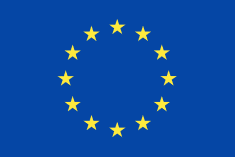![[PREVIOUS]](/ebiz/images/but_previous.gif)
![[INDEX]](/ebiz/images/but_up.gif)
![[NEXT]](/ebiz/images/but_next.gif)
![[PRINT]](/ebiz/images/but_print.gif)
|
Product Numbering/Identification and GS1 data models compliancy
Product Identification/NumberingThe demand for a common or standard method of identifying products has been driven by retailers. Without such a standard, their systems would need to understand the different identification and numbering practices of different manufacturers and to make provision for number duplication. Consequently, the Global Trade Item Number (GTIN) was developed by the international standards organisation GS1, and has become a de facto identification standard for many types of consumer product. As company identification forms part of each GTIN, all products have a globally unique number. In response to the demands of large retailer customers, GTIN is being more widely adopted in both the Textile/Clothing (T/C) and Footwear sectors. It is used to identify products in eBusiness data exchange and at the point of sale through bar coding using EAN/UPC symbology. This standard has therefore been specified in the eBIZ-TCF Technical Architecture for use in eBusiness in the “downstream” supply chain. This does NOT mean that organisations have to change their internal numbering systems to the GTIN format in order to participate in the Pilot Projects. However, companies involved in downstream pilots are expected to make the necessary business and system changes to adopt GTIN for eBusiness but it is not a requirement to implement all of the changes within the timescale of the ebiz-TCF project. In most cases, companies will continue to use their existing numbering systems internally in the business and to translate/map to GTIN numbering for external communication. This translation can either take place in their internal systems or in a third party eBusiness system. Objections to using GTIN are sometimes made on the grounds of cost and/or the lack of sufficient product numbers. Costs are incurred by an annual registration fee with the local GS1 body which varies from country to country and is usually based on the company turnover. The ebiz/TCF project believes that the benefits of eBusiness far outweigh the relatively small cost of registration. Although the breakdown of the GTIN can vary from country to country, most GS1 Member Organisations offer a maximum capacity for article numbers of 100,000 per GS1 company prefix. Often medium sized and large enterprises in the T/C and Footwear sectors have a number of colour/size variants for each model and have a need for more than 100,000 numbers. The only solution to this constraint is to have multiple registrations each offering a set of 100,000 numbers. This has already been done by a number of large companies in both sectors. Compliance with GS1 data models
The XML standard specifications used in eBiz TCF downstream is different from the GS1 definition.
Location Identification/NumberingA standard method of uniquely identifying business locations is desirable in eBusiness so that systems do not need to understand the different identification and numbering practices of different organisations. The Global Location Number (GLN) was developed for this purpose by the international standards organisation GS1 and is closely aligned to the GTIN standard used for product identification and numbering. The company prefix used in GTIN and GLN is identical and is covered by a single registration cost. Although the breakdown of these codes can vary from country to country, the format in most GS1 Member Organisations offers a maximum capacity of 100,000 location numbers. This standard has therefore been specified in the eBIZ-TCF Technical Architecture for use in eBusiness in the “downstream” supply chain. It is particularly relevant for retail companies who have many shops and, because it enables the identification of individual locations, is more suitable than company identification methods that have been proposed such as company registration numbers or tax codes. Again, all the considerations about GTIN adoption apply to GLN: organisations have not to change their internal method of identifying their locations to the GLN format. Although the eBIZ/TCF project believes that, even for small retailers, the benefits of eBusiness can outweigh the cost of registration it also believes that opportunities exist to share the cost over a number of businesses. For example, it could be possible for a Trade Association, Buying Group or similar organisation to register a single company identification with the local GS1 body and then to allocate individual location numbers to its members. |
![[PREVIOUS]](/ebiz/images/but_previous.gif)
![[INDEX]](/ebiz/images/but_up.gif)
![[NEXT]](/ebiz/images/but_next.gif)
![[PRINT]](/ebiz/images/but_print.gif)
|







